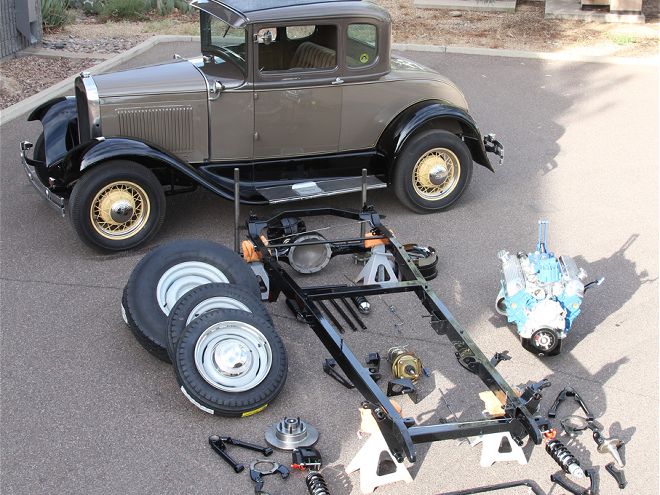
Here's an idea that's not as crazy as it first sounds; take a nice old stock or restored Model A, pull the body and fenders, and mount them on an aftermarket frame, then sell the original frame to recoup some of your outlay, or fit a roadster body for an instant banger-powered hot rod. To pull this off we paid a visit to Total Cost Involved Engineering—and what better way to celebrate their 40th anniversary—rounded up a Speedway Motors catalog—where we almost wore out the pages corralling the myriad of components we needed to pull this off—a phone call to Coker Tire for a wheel and tire combination, and a visit down the street to Hughes Performance for their transmission offering.
We selected a TCI Engineering '28-31 chassis with IFS and four-link rear. The IFS is based around a custom spindle, with geometry designed to maximize cornering grip while providing great streetability. With chassis 'rails built from 2x4x0.125-inch steel, the foundation is stronger than a boxed stock frame.
Really nice Model As are turning up regularly these days for less than the cost of a decent paintjob. Consider that these cars come with glass installed and a perfectly serviceable interior and you're looking at a relatively inexpensive way into owning a hot rod.
This was the basis of a plan Editor Brian Brennan hatched with Dean Livermore of Hot Rods By Dean, in Phoenix, and before you could say “brown body with black fenders,” Livemore had sourced a superclean '30 A coupe, and a complete TCI Engineering '28-31 IFS chassis (celebrating their 40th anniversary) set up for a 302 Ford and C4 trans was winging its way across the California state line, along with ribbed front and dirt track rear tires, on steel rims, courtesy of Coker Tire. Speedway Motors supplied the 302 Ford engine, along with dress-up parts, stainless exhaust kit, and numerous other parts we'll get to in our next installment, while Hughes Performance supplied the C4 trans. The suspension at all four corners is courtesy of RideTech coilovers, which come with the TCI Engineering kit. However, they're worth a mention of their own, as, because they're filled with nitrogen rather than oil, they can be mounted upside down to provide optimum clearance if the application requires it, with no risk of leakage. This is actually desirable on many late-'60s muscle car applications, as well as on mid-20th century Ford and Chevy pickup IFS systems.
This is part one of several parts that will show you how to take a stocker and turn it into a hot rod. With all the parts gathered together, follow along as we show how a stock Model A coupe became a hot rod almost overnight.
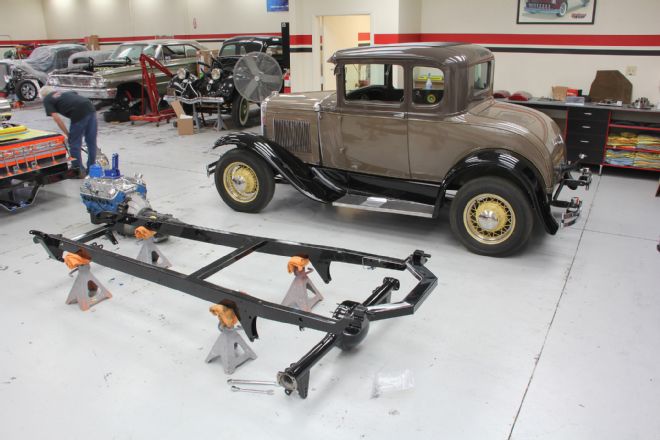
Here’s the coupe Dean Livermore turned up, a stocker albeit on 16-inch wires, sitting next to the TCI Engineering chassis, which was supplied complete with rearend, four-bar, rear sway bar, stainless steel brake lines and IFS. It’s been powdercoated here, and awaits re-assembly.
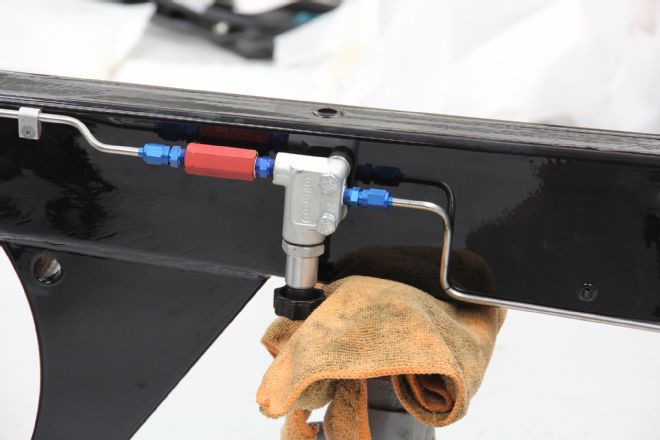
The stainless brake line kit is an upgrade option, but totally worth it, and comes pre-bent. This is the Wilwood proportioning valve and 10-psi residual valve, mounted just forward of the four-bar bracket.
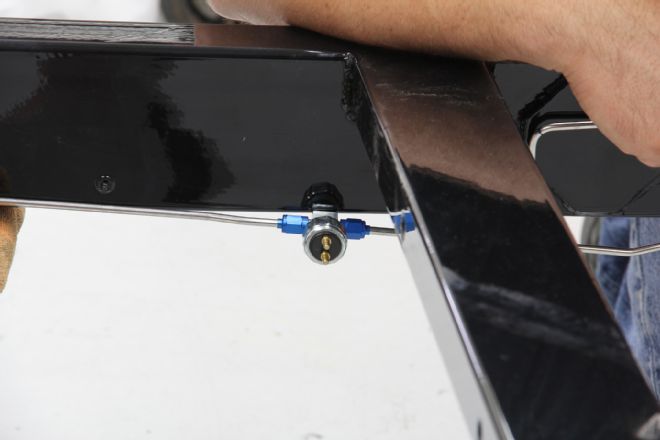
The brake light switch mounts just behind the transmission crossmember on the bottom of the framerail.
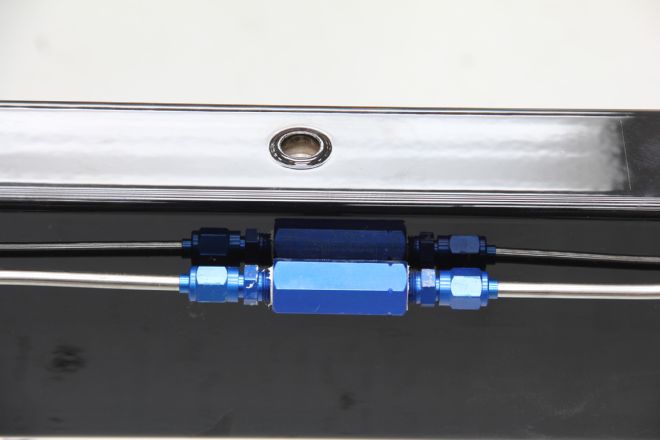
The 2-psi residual valves are plumbed in each brake line to the front brakes. Disc/drum systems usually use 2-psi valves in the front and 10-psi valves in the rear line.
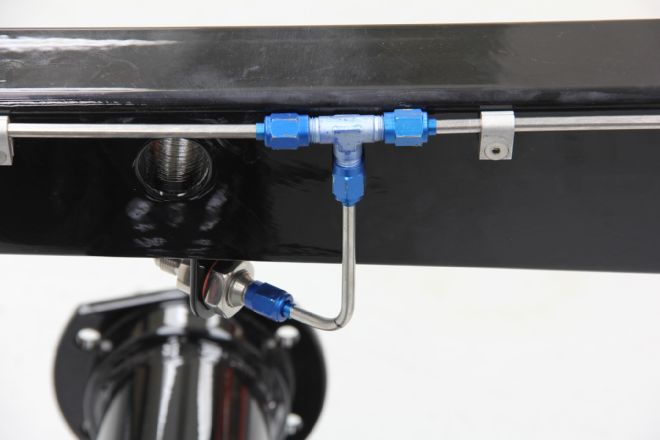
On the left chassis ’rail, the brake line T’s off to the flex hose bracket, then continues across the rear crossmember to the right rear flex hose bracket.
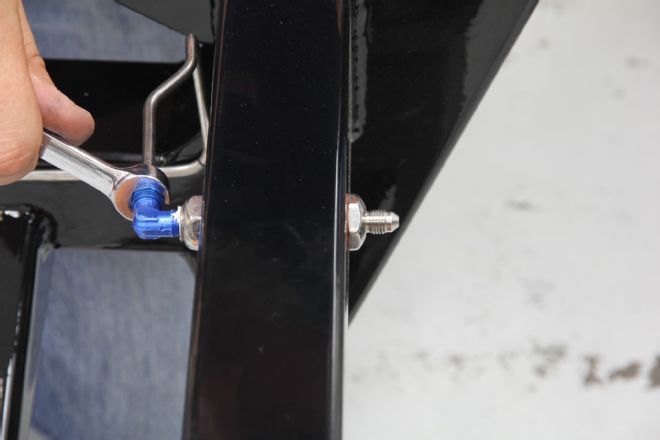
Up front, through-frame fittings connect directly to the flex hoses, making for a neat system.
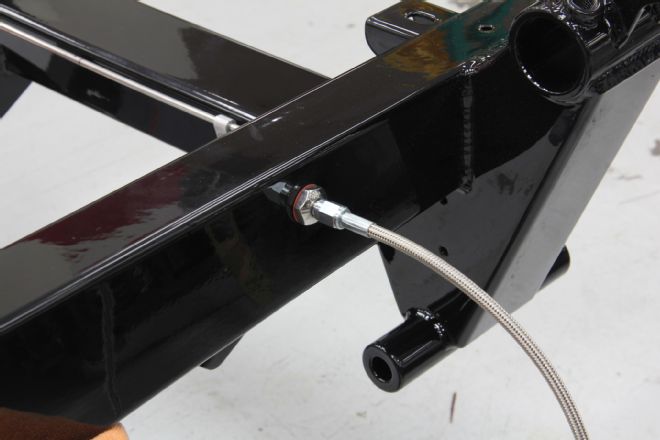
The braided flex hose and through-frame fitting, just behind the front crossmember that will mount the IFS.
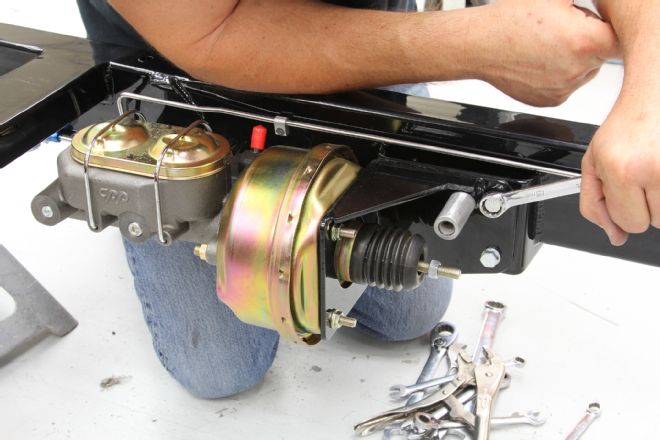
Livermore installs the CPP under-floor master cylinder and booster, supplied as part of the chassis kit. As we’ll see, he modified the pedals so they appear to be stock Model A items inside the car.
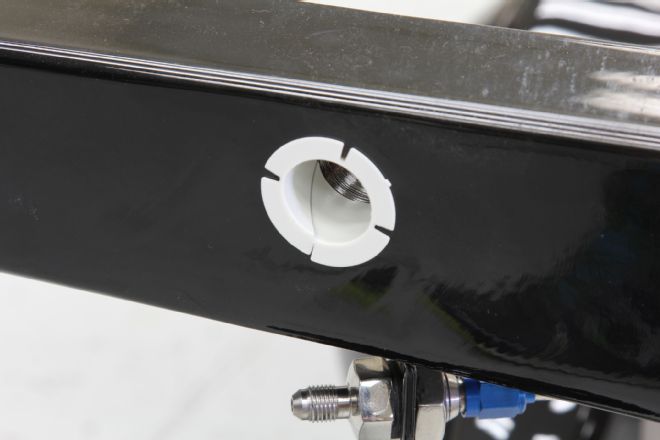
The rear sway bar installs through the framerails, suing these Teflon bushings…
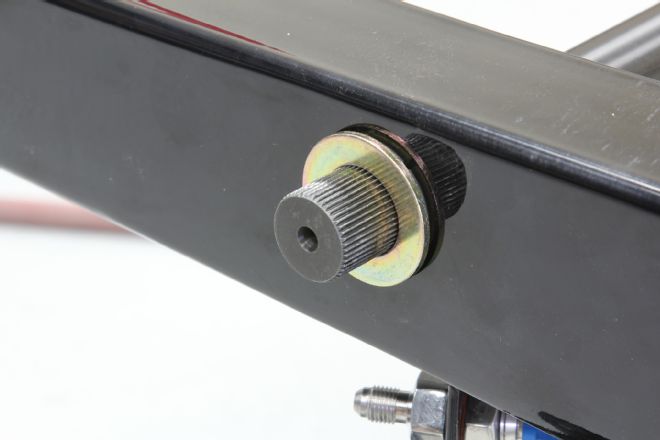
...followed by the bar itself and a washer...
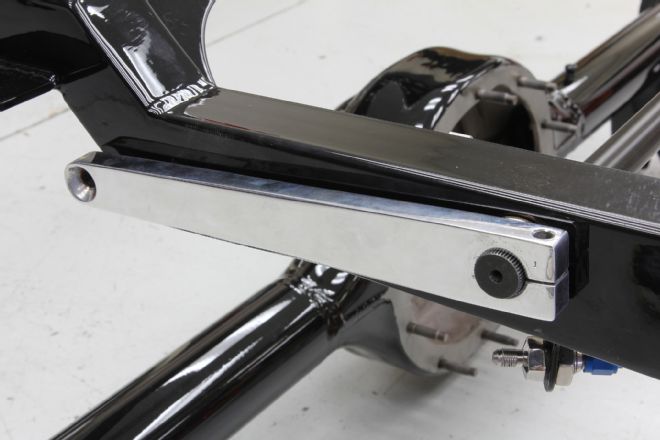
…and finally the aluminum arm, which is splined and secured using a pinch bolt.
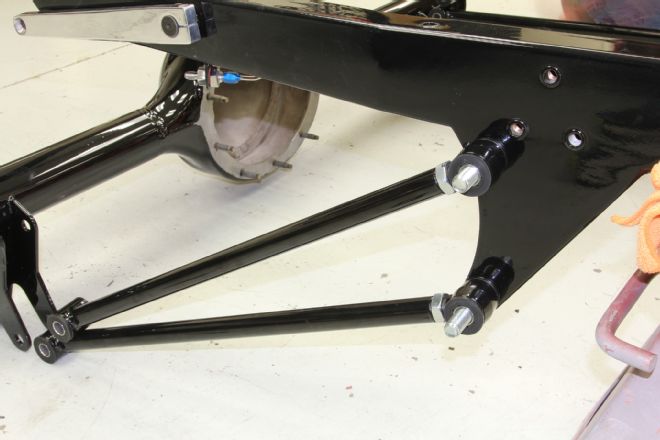
The four-bar was installed next, ensuring to mount the adjustable ends forward. Livermore noted that the bolts should be passed through from the inside of the frame as shown, as once the splash aprons are fitted, there’s no way to remove them if required.
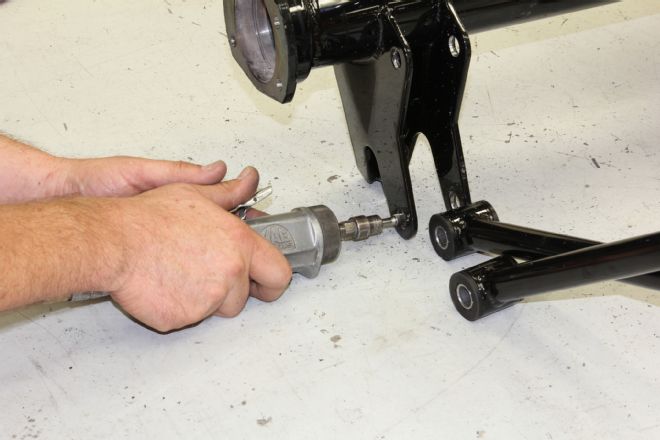
Most of the holes in the chassis had been covered during the powdercoat process, saving hours of work, but the coating did have to be removed from the rearend brackets with a die grinder.
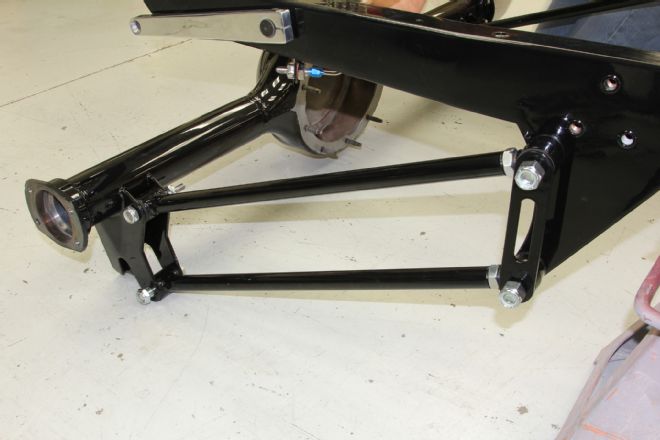
The four-bar and forward support bracket were installed with the reared housing still on the floor.
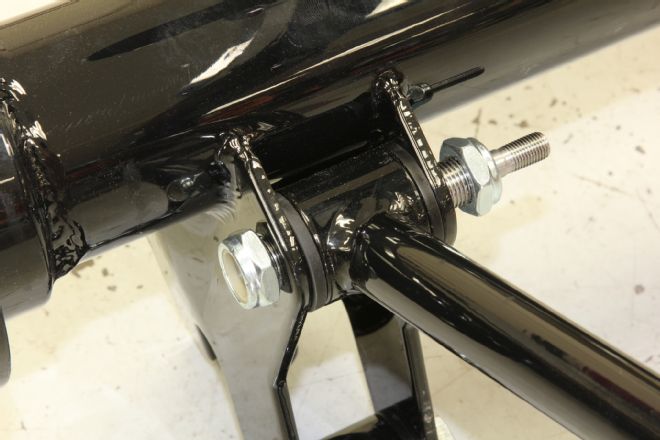
Note the upper rear four-bar bolts are unique, as they mount the sway bar links on their inner end.
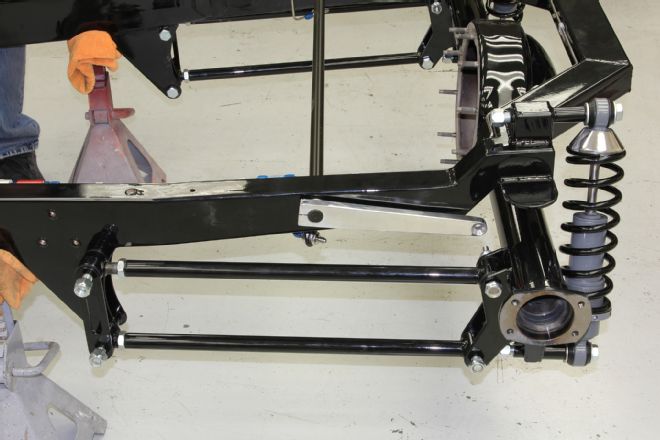
The rearend was raised using a floor jack, and the RideTech coilovers (supplied with the chassis kit) were installed, so the pinion angle could be set, using an angle finder. The chassis was set up at ride height for this, and it was discovered that owing to the extremely large diameter rear tires chosen (8.90x16 Firestones) it was impossible to set the pinion at the desired 3 degrees simply by adjusting the lower four-bars as usual. The solution in this instance, given that the tire had to be exactly central in the fender to look right, was to remove the lower four-bars, reduce their length, and re-tap the threads to make them slightly shorter, allowing the housing to rotate so the pinion was pointing upward by 3 degrees. Of course, using a smaller tire would make this step unnecessary. Before you write us, we’re aware the Panhard rod has yet to be installed.
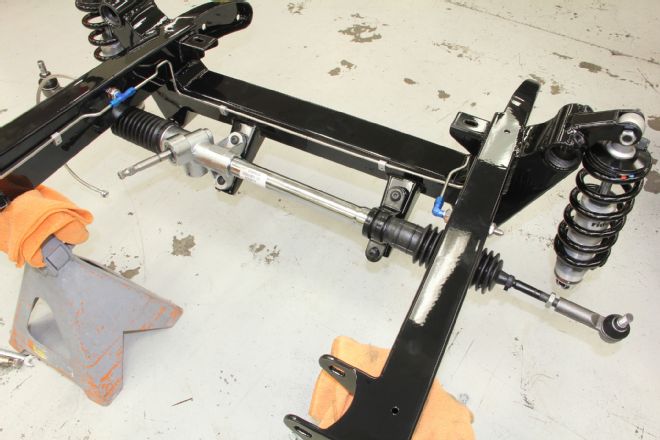
The manual steering rack and coilovers were mounted to the front crossmember, but the IFS was left off for now as Livermore wanted to fit the fenders first.
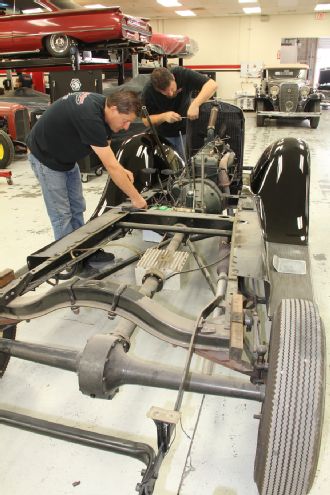
The stocker was soon stripped of its fenders, aprons, running boards, and grille shell.
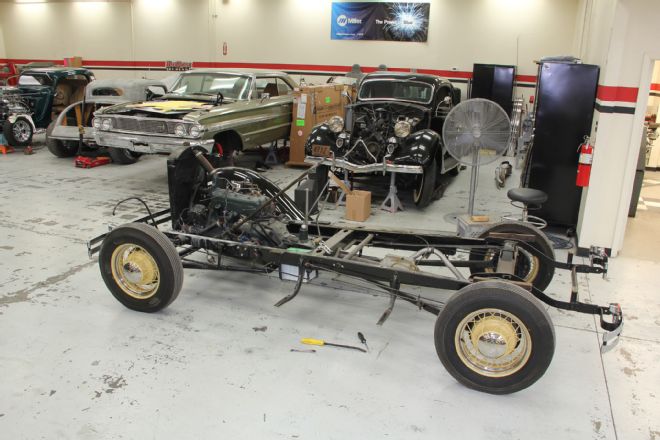
Surplus to requirements! Now, to sell it or drop a roadster body on for some no-frills fun?
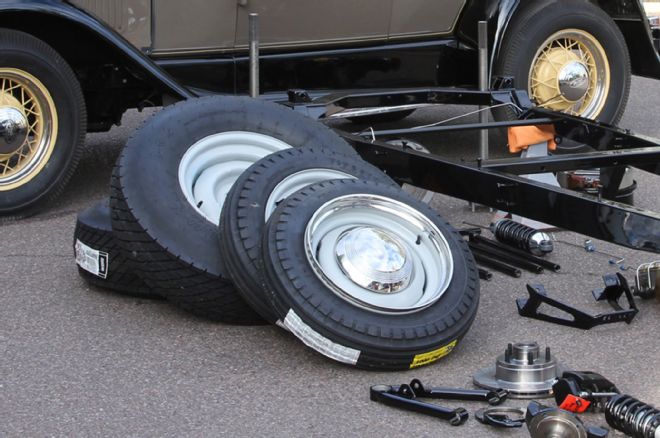
Coker Tire supplied the 8.90-16 rear dirt track and 5-15 ribbed front rubber, as well as the steel wheels, hubcaps, and trim rings.
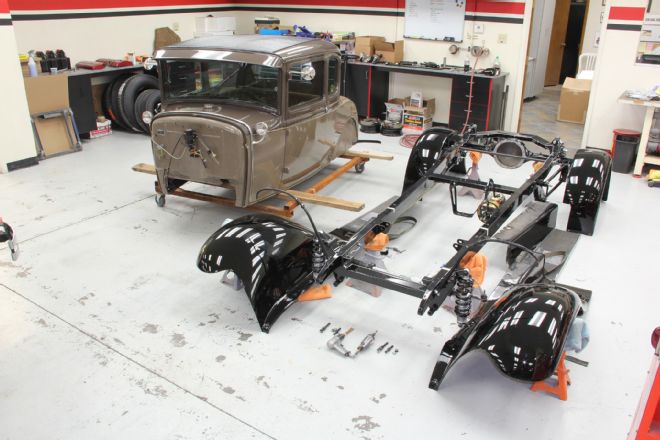
And here’s where we leave it for this installment, with the chassis almost fully built up, the body sitting next to it, and the fenders mocked in place. The fender braces were removed from the stock chassis to be reused on the new frame.